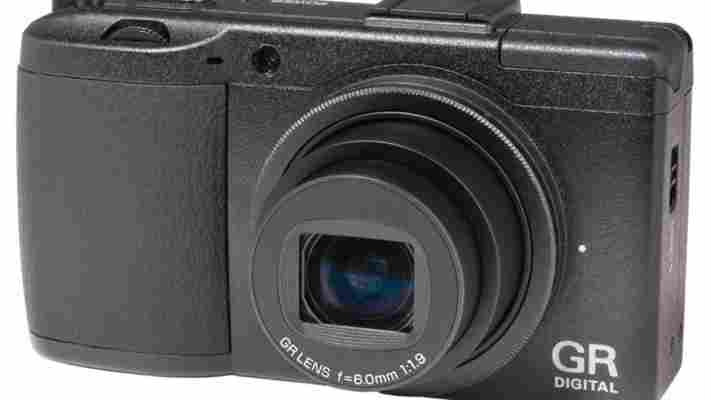A year ago, the compact digital camera market was stuck in a rut, with most manufacturers offering unnecessarily high resolutions that did little to improve actual photos.
Things are markedly different now, and manufacturers are finding more imaginative - and vastly more effective - ways to boost image quality.
Ricoh's GR Digital III certainly scores points for originality. Its lens has a fixed 28mm focal length, which means there's no zoom function at all. However, its f/1.9 aperture helps it capture over twice as much light as a typical f/2.8 lens. Omitting a zoom helps to produce a brighter lens, but it also makes it easier to capture sharper images with less distortion. Sure enough, its pictures were remarkably crisp right into the corners of the frame. The sensor is less unusual at 10 megapixels and with a 1?1.7in diameter, but these specifications strike a sensible balance between detail and sensitivity.
Other features demonstrate that this is a serious photographic tool. The cosmetic design is uncompromisingly stark, and even Ricoh's logo is missing from the front of the camera. It has a comfortable rubber handgrip, though. The rest of the body is made from magnesium alloy, so it's very tough and light.
At the back, there's a 3in screen with a whopping 920,000-pixel resolution, which should go some way to help SLR owners overlook the lack of a viewfinder. There are lots of controls for quick access to key settings, including dual dials for shutter speed and aperture control. The menu has comprehensive colour and noise-reduction options plus RAW capture - features usually reserved for SLRs. Face detection is notably absent, and the basic video mode is hidden among the scene presets, but these issues probably won't bother keen photographers. The lack of an HDMI output is more disappointing on a camera at this price, as is the lack of image stabilisation, which cancels the advantage of the bright lens when shooting static subjects.
A year ago we would have recommended the GR Digital III without reservation, but today it has to compete with Panasonic's LX3. Both cameras have bright lenses, are extremely responsive and excel for image quality. The LX3 has a slight edge for sharpness and its automatic exposures are more reliable, but the GR's colours look more natural. It's hard to choose between them at high sensitivities, but the GR edged ahead at times. Their features are quite different, though. The LX3 captures HD video and has a 2.5x zoom and optical image stabilisation. The Ricoh's higher-resolution screen and lower weight aren't enough to justify the fact that it costs around £150 more.
The GR Digital III is also likely to suffer in comparison with Panasonic's GF1 and Sigma's DP2, both of which house an SLR-sized sensor in a compact body - look out for our imminent reviews of these models. Even so, it's impossible to remain downbeat about what is undeniably a well-conceived, expertly executed camera.
Basic Specifications | |
|---|---|
| Rating | *** |
| CCD effective megapixels | 10.0 megapixels |
| CCD size | 1/1.7in |
| Viewfinder | none |
| LCD screen size | 3.0in |
| LCD screen resolution | 920,000 pixels |
| Optical zoom | 1.0x |
| Zoom 35mm equivalent | 28mm |
| Image stabilisation | none |
| Maximum image resolution | 3,648x2,736 |
| Maximum movie resolution | 640x480 |
| Movie frame rate at max quality | 30fps |
| File formats | JPEG, RAW; AVI (M-JPEG) |
Physical | |
| Memory slot | SDHC |
| Mermory supplied | 88MB internal |
| Battery type | 3.6V 1,250mAh Li-ion or 2x AAA |
| Battery Life (tested) | 370 shots |
| Connectivity | USB, AV |
| Accessories | USB and AV cables |
| Weight | 188g |
| Size | 60x109x26mm |
Buying Information | |
| Price | £450 |
| Supplier | http://www.simplyelectronics.net |
| Details | www.ricoh.co.uk |
Camera Controls | |
| Exposure modes | program, shutter priority, aperture priority, manual |
| Shutter speed | 180 to 1/2,000 seconds |
| Aperture range | f/1.9 to f/9 |
| ISO range (at full resolution) | 64 to 1600 |
| Exposure compensation | +/-2 EV |
| White balance | auto, 4 presets, manual |
| Additional image controls | contrast, saturation, sharpness, noise reduction |
| Manual focus | Yes |
| Closest macro focus | 1cm |
| Auto-focus modes | multi, spot |
| Metering modes | multi, centre, spot |
| Flash | auto, forced, suppressed, slow synchro, rear curtain, red-eye reduction |
| Drive modes | single, continuous, self-timer, AE bracket, WB bracket, interval |







Leave a Reply